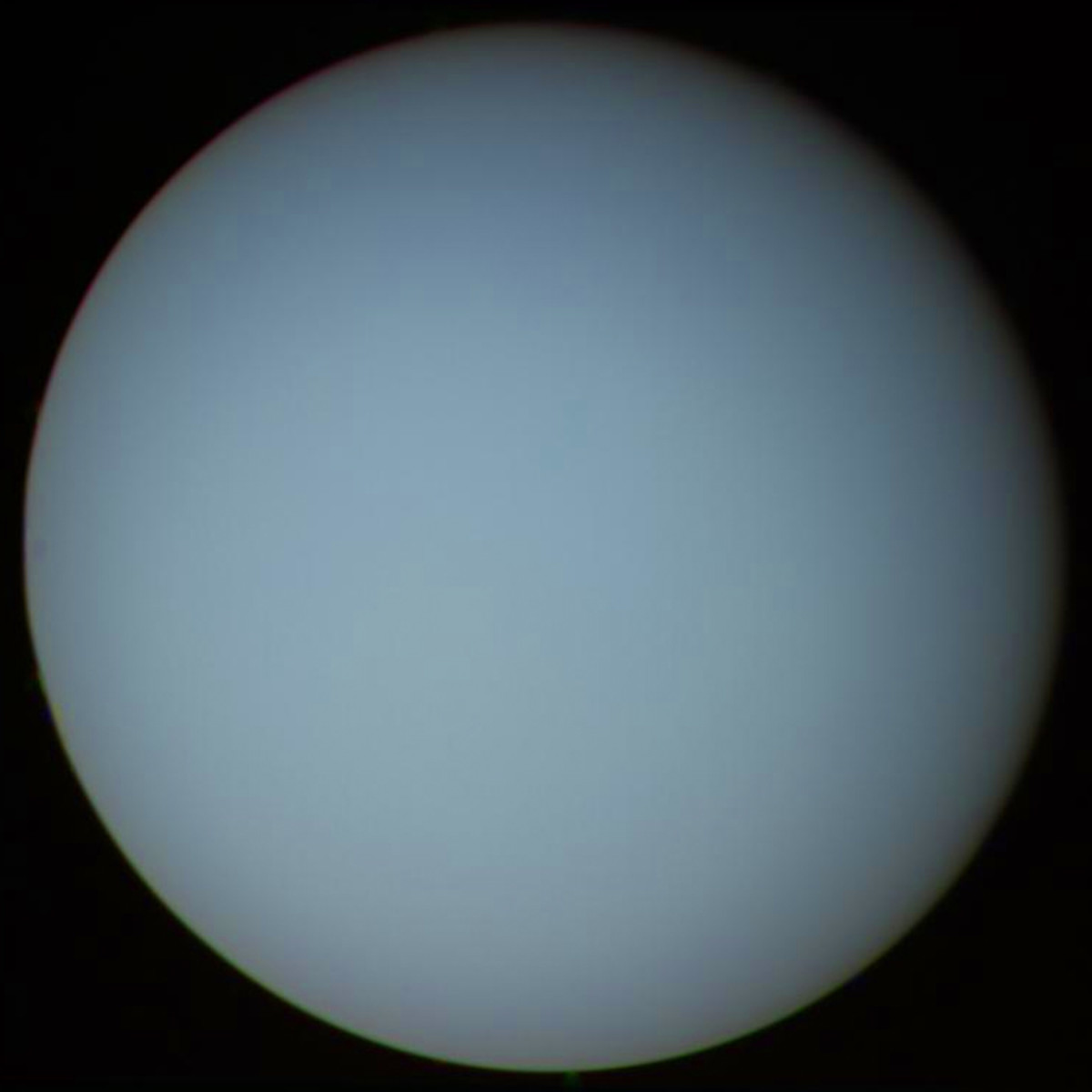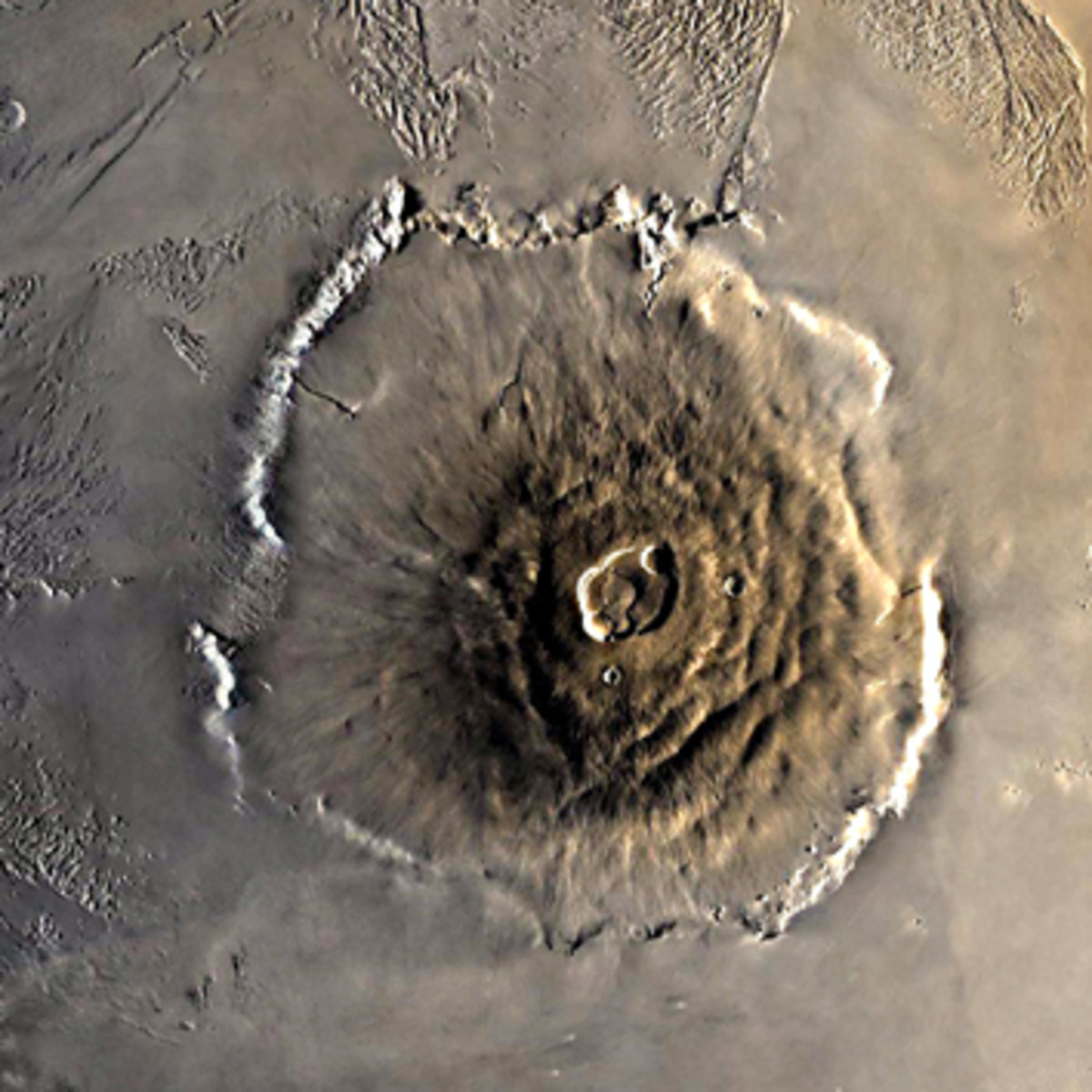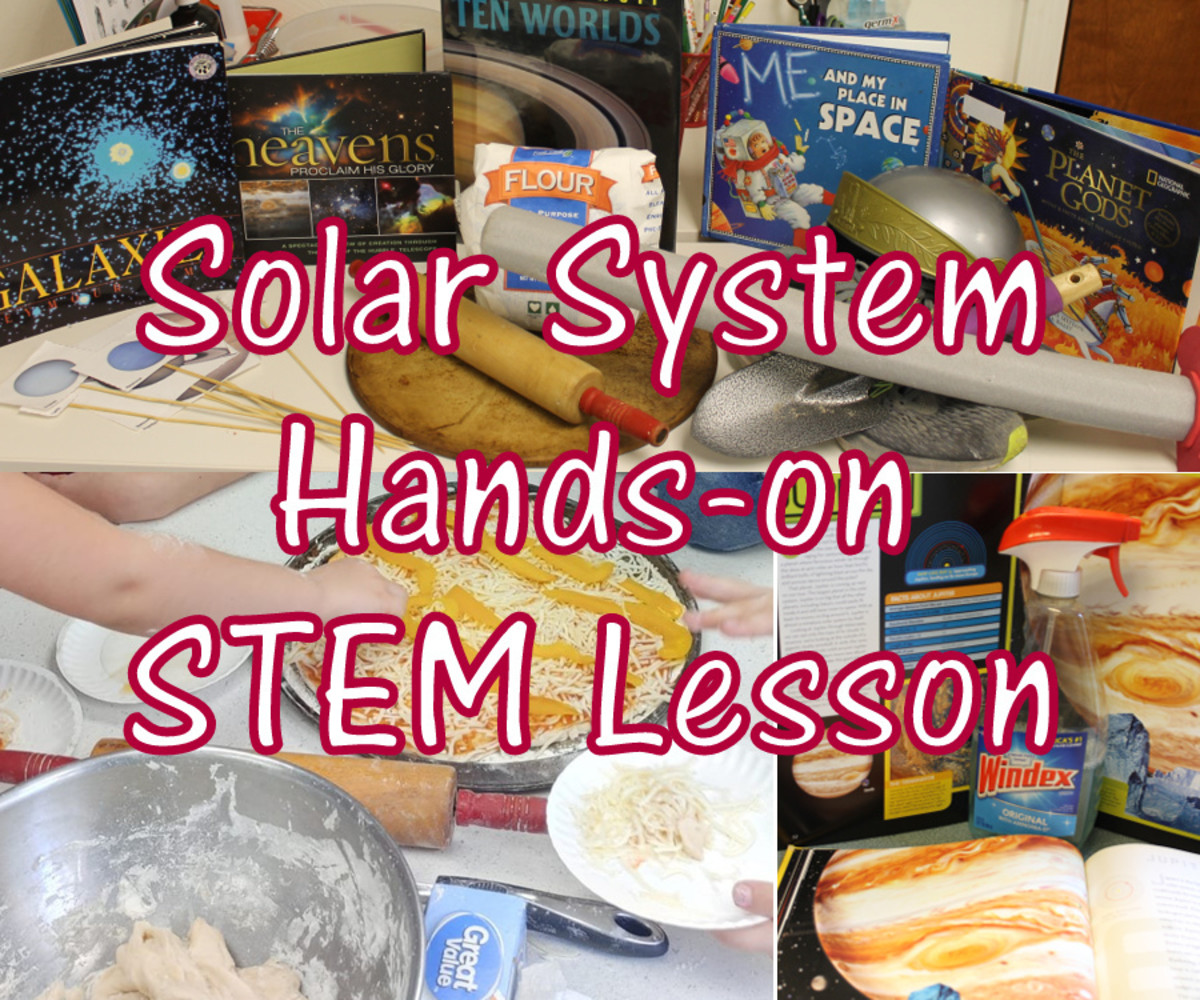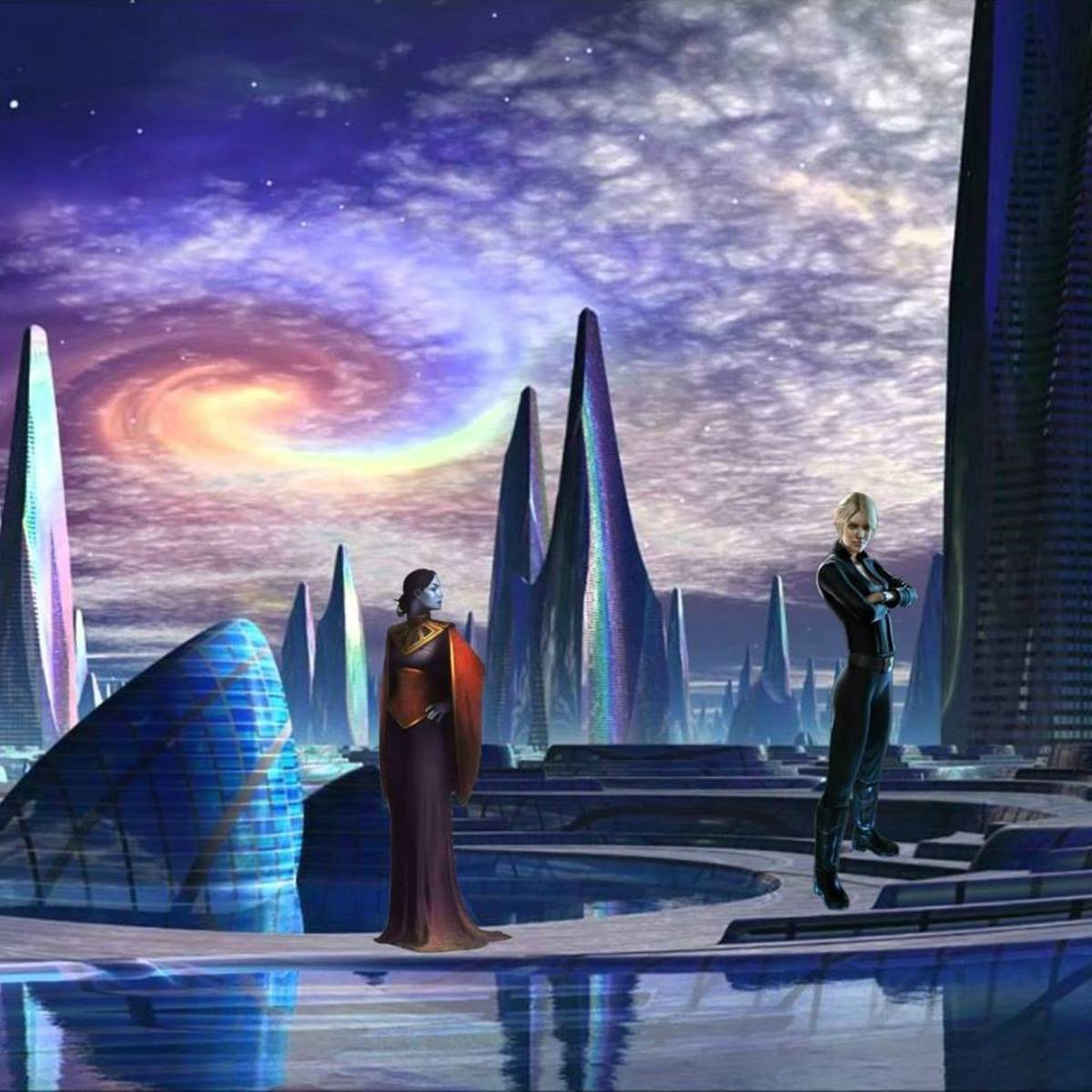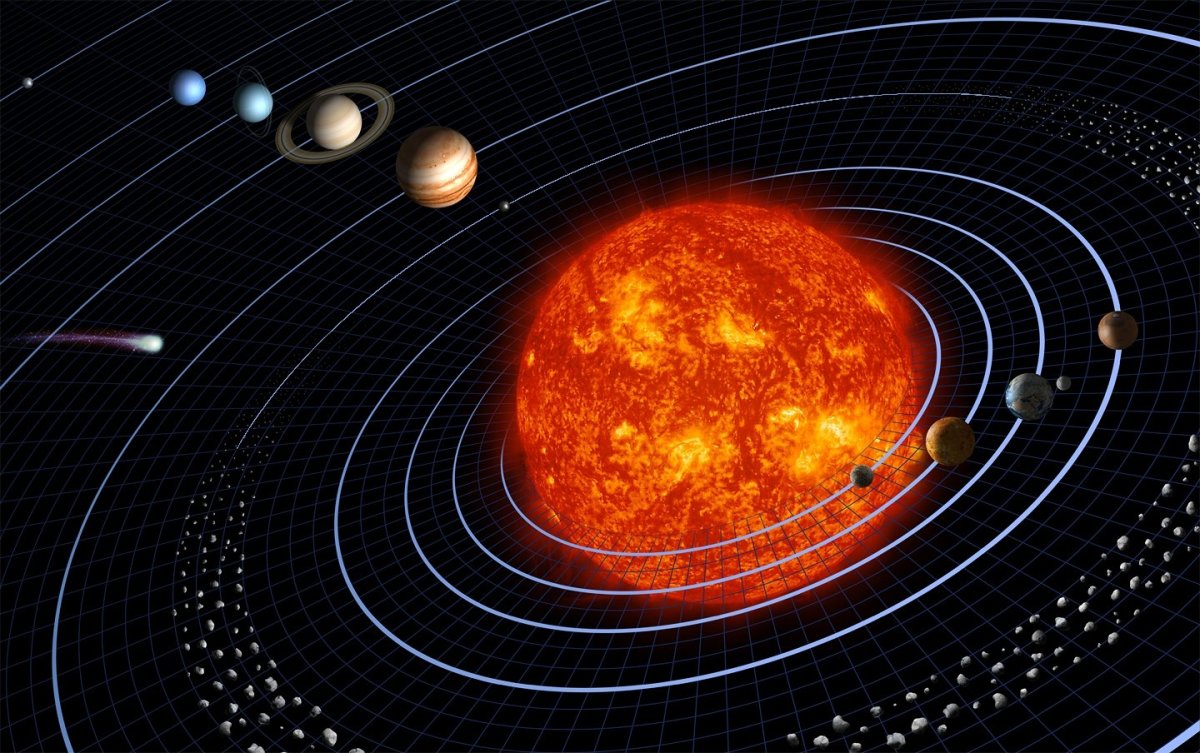Harmonic Spectroscopy
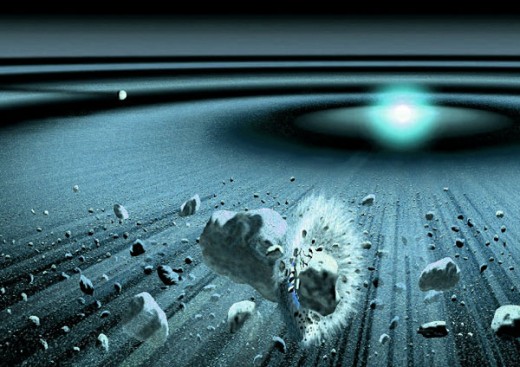
Defining Positions & Planetary Orbits by Analyzing Stellar Accretion Structure
Harmonic spectroscopy is a science of determining the positions and orbits of planets around stars by examining the structure of the accretion disk in all its detail. Like analyzing elements by their Fraunhoffer emission/absorption lines, stellar systems can be analyzed as to their structure by the distribution of matter in an evolved accretion disk. There will be discrete banding in the accretion disk that is the result of planetary sorting over long periods of time. No two systems are alike, so banding will be a distinct signature of each individual stellar system, just as each element is characterized by distinct Fraunhoffer emission/absorption spectral lines. The sorting of material in accretion disks can also be called a combination of Fractal Orbital Period Resonance and Fractal Orbital Period Dissonance. Fractal orbital period resonance creates a discrete pattern within any accretion disk where multiple bodies evolve in competition for material.
Inner regions tend to evolve faster than outer regions of the disk around a star. This is the direct result of gravitational influence from the star, which falls off over distance in an inverse power law over distance. This is generally true in cases where gravity is insufficient to cause strong warping of space-time such as in the case of our solar system. Consequently, material will tend to form discrete bands in the inner regions much more quickly than in the outer regions in a power law function but one that evolves through a time relation. This is to say that for a body of like mass twice as far from the star as another, will experience only 1/4 the gravitational influence from the central star. It will move only 1/4 as fast to balance between gravitational collapse into the star and escape from the system altogether by too great an angular momentum. The orbit, however, is only twice the circumference of the inner body, but takes the mass in it 4 times as long to orbit the star.
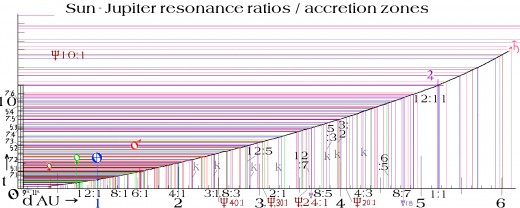
The above figure is a space (distance in AU)-time (in years) phase space graph depicting the orbital resonances in years for each of the planets, Mercury through to Saturn. The inner solar system is depicted most clearly out to Jupiter. Orbital period resonances from 1:2 through to 11:12 are depicted, color-coded for each individual planet. In the distance dimension, forming the horizontal, the critical resonance distance is given in astronomical units (AU) for the semi major axis of resonant orbits. Nothing can orbit for long with stability in these regions. Instead, relative stability can be found in the regions devoid of colored lines where there are no orbital resonances; at least to the 12th harmonic for this set of harmonies. In this figure, these would be the white regions between color-coded lines. If we look at the region between Mars and Jupiter and compare this with a plot of the asteroids by semi major axis and quantity, we find a strong match to the void regions between the colored lines. There are a couple of notable exceptions. The Trojan asteroids and the Hildas that have orbital periods close to the 1:1 and 3:2 resonances with Jupiter respectively. The Trojans find themselves in an equipotential gravitational well of balance between the sun and Jupiter at 60 degrees ahead and behind Jupiter in orbits of nearly identical semi major axes to Jupiter. The Hildas are not in exact discrete resonance of 3 orbits to 2 of Jupiter, but represent a class of objects that are phase locking and could represent a substantial threat. They are also transitional, showing a stage of evolution that has long since past for the most part in our region of the solar system. The Hildas are just now being drawn into some kind of fatal encounter in the relatively near future, in astronomical terms, with Jupiter as the active agent in evolution. But then again, Jupiter was and is primarily responsible for the way the whole solar system evolved. When Neptune evolved out of this dance, it took over as the primary influence on the Kuiper belt.
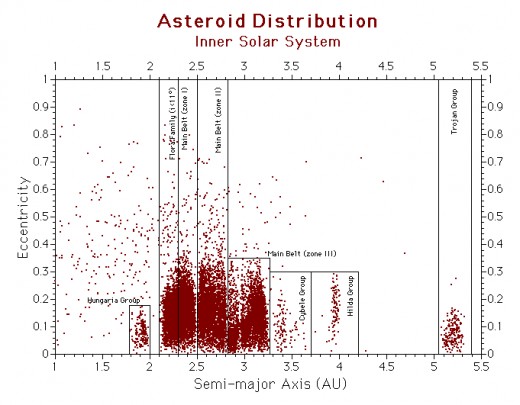
Here is a view of the main belt asteroid distribution by semi major axis and eccentricity. Give the Hilda asteroids particular attention, as they are very near the exact discrete 3:2 resonance with Jupiter. The few that have large eccentricities are about to go through a radical departure from their orbit and could have one of three fates. They could be drawn into Jupiter. They could be thrown toward another planet or the sun or be tossed completely out of the solar system to become a rouge minor planet lost in interstellar space. The latter case would be especially true if the minor planet got a powerful gravity boost from Jupiter and just managed to escape, unlike what occurred with SL-9.
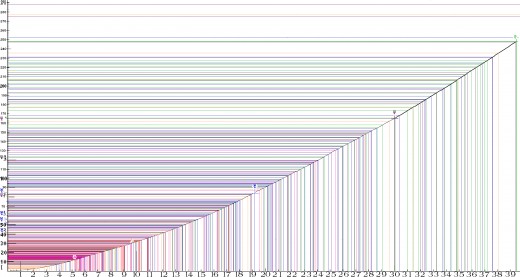
The above figure is self-similar in concept to the inner solar phase space graph. Here we see a plot of the outer solar system, depicting orbital resonances for the planets of Jupiter through to the Kuiper belt, with Neptune and Pluto-Charon marking the outer edge of the "ordered" solar system. Once again, the orbital period resonances are color coded for each of the planets.
Taking the two figures into consideration, we can deduce the following. Recall that the inner solar system and stellar systems in general evolve faster closer to the central star than in the outer parts away from the star as a consideration. This applies to situations that are essentially non-relativistic, or at least relativistic only in the sense of having a vanishingly small influence. The simple calculation above shows that it will take the outer planet twice the radial distance from a star as the inner one will take four times as long to orbit and four times as long to accrete material, especially in the early stages of development. The further away a planet is of course, the longer still it will take to evolve. Neptune is about 30 AU to Earth's 1 AU from the sun. Consequently, evolution out there should take about 900 times as long. The crucial formative era of gravitational accretion occurred between 3.95 to 3.85 billion years ago for the inner solar system out to Mars. This is in the context of a system thought to be about 4.55 billion years old. It was the era when most impacts occurred. Since then, things have quieted down dramatically. So if it took 600 million years to form the inner planets to most of their present state, then the outer solar system is still by and large in the process of evolving, albeit in a much slower pace. The graphs show that there is plenty of material that could orbit between Saturn and Uranus, Uranus and Neptune in discrete, but more diffuse bands than in the main asteroid belt. We can look at the main asteroid belt to glean the structure of the accretion disk from Jupiter out to the edge of the Kuiper belt. Considering the nature of the forces at work, we have a varying rate of evolution that functions on an inverse power law over time and organizes unaccreted material into discrete bands that are well structured in the inner regions and more diffuse, but still showing evidence of structure further away from the star in the general case of equal distribution of matter.
We know for a fact due to observation that matter is distributed in a "lumpy" fashion in the cosmos. So, what is generally true is not an exact description in the particular. Our own solar system shows clear evidence of unequal distribution of matter by quantity and type. Further, the fact the Uranus and Neptune have residuals in their orbits attests to plenty of unaccreted material in the form of asteroids and comets in that region of the solar system. Consider that the planer area between these orbits is some 27 times greater than the planer area between the orbits of Mars and Jupiter. This allows for much more in the way of minor planets and eliminates the need for a planet X, which has not been detected by observations employing the two Pioneer spacecraft and by other means. There is another revelation in the above calculations. Chiron and other bodies are in positions of transition from one region to another in the solar system. In other words, the orbits are changing due to being in resonance with one or more of the planets. In the case of Chiron, the orbital period of 50.42 years is in close match to resonance with Saturn in a 7:12 orbital period harmony, and Uranus in a 5:3 orbital period harmony. The 7:12 relation to Saturn gives an orbital period of 50.434 years and with the 5:3 resonance of Uranus, a 50.406-year period. The body is caught in a phase locking loop with Saturn when Chiron is in perihelion and Uranus when it's at aphelion. The orbital changing effects are greatest at the heliocentric perihelion conjunction with Saturn and the heliocentric aphelion conjunction with Uranus. Chiron has a high eccentricity of 0.381, making its orbit quite elliptical, clearly a body in transition. The struggle between the two close resonances gives some chaosity to the orbit of Chiron. Unfortunately, we have not been observing Chiron long enough to see the evolution of its orbit since its discovery in 1977. We can, however, run calculations with any good astronomical program to find epochs of conjunction with Saturn and Uranus and observe orbital changes that occur at such times.
There are three basic principles in operation in any stellar system.
-
The closer to the star that material orbits, the faster it evolves into large singular bodies in an inverse power law over distance and through time.
-
The forming planets direct the clearing of the accretion disk into discrete zones of resonance where material is ejected and collected from and the material in dissonant zones is gathered into or ejected most slowly.
-
The lower harmonic resonances, such as the 2:1 and 3:1 clear the fastest and the regions that are harmonics in 1:20 clear more slowly. Regions in resonance by factors greater than this clear the most slowly.
The foregoing is conditioned by the gravity of nearby planets. So even with the lesser power harmonics, the proximity of an orbiting planet to material will clear it out into itself or into another planet or into interstellar space. In fact, the Lagrangian point of gravitational balance, L1, between the planet and the star, defines the limit of a planets reach. Anything orbiting closer to the star than L1 would be less likely perturbed by the planet. A body like a minor planet, which passes closer to the planet than its L1 point, especially during a conjunction, is a body in trouble, destined to have some kind of fatal outcome. A good example of this L1 defined relation is the Earth-Moon duet. The Moon always orbits inside the Earth-Sun L1 point defined radial distance. For the foreseeable future, the Moon will remain bound up with the Earth. The Moon though is slowly being flung away from the Earth due to an exchange of angular momentum from the Earth to the Moon. Eventually, the moon may reach the L1 radial distance from Earth, now occupied by SOHO. When it does, provided that the Earth has not slowed in rotation enough to tidally lock to it before then, then the Moon will break free of Earth's embrace to become an independent planet in its own right. It will then be subject to the same harmonic influences that shape the rest of the solar system. Where it goes from there, depends how its new orbit evolves. Further indications of complex clearing occur where orbital resonances of different planets converge around a particular region of a close grouping of orbital periods almost to the point of identity. An example of this is the orbital period defined by Chiron that is close to resonances of Saturn and Uranus.
It is easy to find accretion clearance from the orbital period data of all major planets. It is extraordinarily difficult to find planets by examining zones of clearance alone and working backward to find planets that are responsible for the resonant clearing. This is the science of harmonic spectroscopy. Like identifying the abundance of interstellar and stellar elements using Fraunhoffer emission/absorption spectra, the clearance in stellar accretion disk is a discrete sign of the existence of orbiting planets. Thus the existence of gaps betrays the existence of planets that may be invisible due to their vast distances from us. Other means like star wobbles and micro lensing can locate planets. Once found, a partial harmonic spectrograph of the system can be erected and the most likely positions for minor planets, undetectable by these means, can be established.
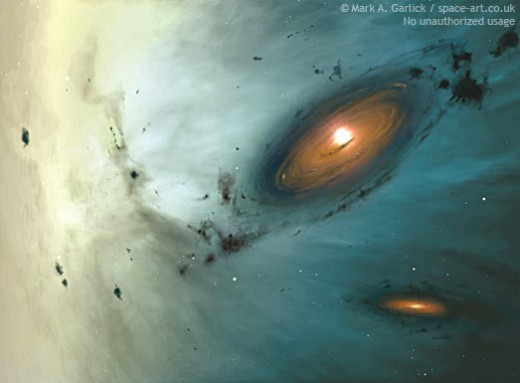
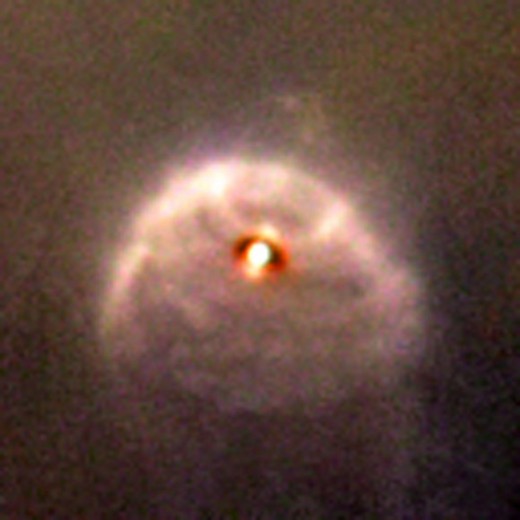
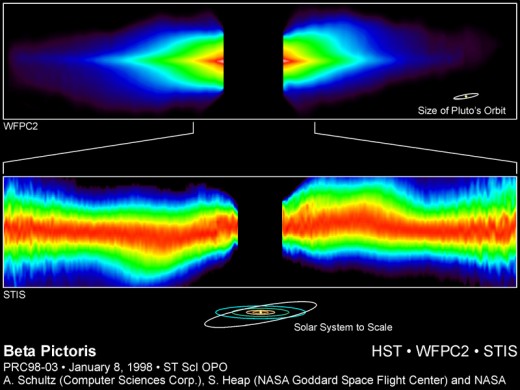
The Hubble archives now contain several good examples of harmonic spectroscopy that have been found by observation of the cosmos. One particularly good example is found in the Beta Pictoris accretion disk. There are several photos of Beta Pictoris, but the color enhanced ones show subtle banding on both sides of the accretion disk that is visible. Beta Pictoris is an edge on view of an exosolar system in formation. Other observations indicate that at least two planets are in orbit around the star in this young system. Other examples of forming solar systems are contained in the views of the Orion proplyds and in the stars HD 141569 and HR 4796A. The two last references are views of forming exosolar system viewed from an angle. Both show gaps and clearing in regions that would be equivalent to the Kuiper belt in our system. Astronomers already say that this is the result of planets clearing out material.
From what has been stated earlier, this is not as likely as the scenario of harmonic clearing due to the presence of planets closer to the central star. Large planets are not ruled out however, as planets can be already formed and exist far from stars as rogue planets that were ejected long ago from other systems or formed independent of stars as stars themselves are created. Rogue planets can be captured by other stars and can conceivably end up at any distance. A clear possible indication of a captured rogue planet, would be a very elongated orbit, such as seen with a typical long period comet. However, for the most part, evolution occurs more slowly in the outer reaches of an accretion disk than near the star. So native born planets to an exosolar system would form more quickly near the star than further away. So, two processes can shape accretion disks. One cause is one or more planets in orbit around the star; the other is the influence of interlopers from outside of the forming system.
Some stellar systems will be more stable than others. There is after all, some chaos that is always induced into every stellar system of planets. It usually comes from the outside either by the passing of other stars, the disturbance that can come from super novae, rogue bodies that enter from the outside, attracted by the central star and orbiting planets, Changes induced as a result of galactic evolution, or imbalances that evolve within the system itself. Of all the foregoing, the latter is the most common. In the early stages, hundreds of small planets swarm in the inner regions. Some are orbiting in a non-fatal region where there are no corresponding resonances to other orbits. Most of them though, do orbit in fatal resonances and will end up in one of the three conditions above. In a crowded early stellar system though, the most likely fate is violent impact with another small planet. As a stellar system evolves and settles to stability, the danger of fatal orbits is not eliminated. Smaller bodies that are phase locking, like Chiron above, will eventually be drawn toward one of three fates. With every impact, orbits are changed and the new orbit of the larger body that absorbs the smaller may itself be knocked into a fatal orbit. Other factors such as increase in mass also play their part in speeding evolution around the growing planet. If two large planets resonate orbitally with one another, the orbits of both will be changed. At some point, one or both can be thrown out of the stellar system. Any material that orbits in resonance will be gathered into the planets. There exists within our own solar system, a curious dance of this very type around Saturn in the 'F' ring and its shepherd moons.
Except for Saturn, accretion rings are generally difficult to read on account of one important factor. Most orbits are complexly elliptical and due to this there is a blending of material making gaps indistinct. Instead, we have to grasp the problem by studying the semi major axis and orbital period of all the objects in the accretion disk. Where resonances converge, then there is more distinct clearing.



